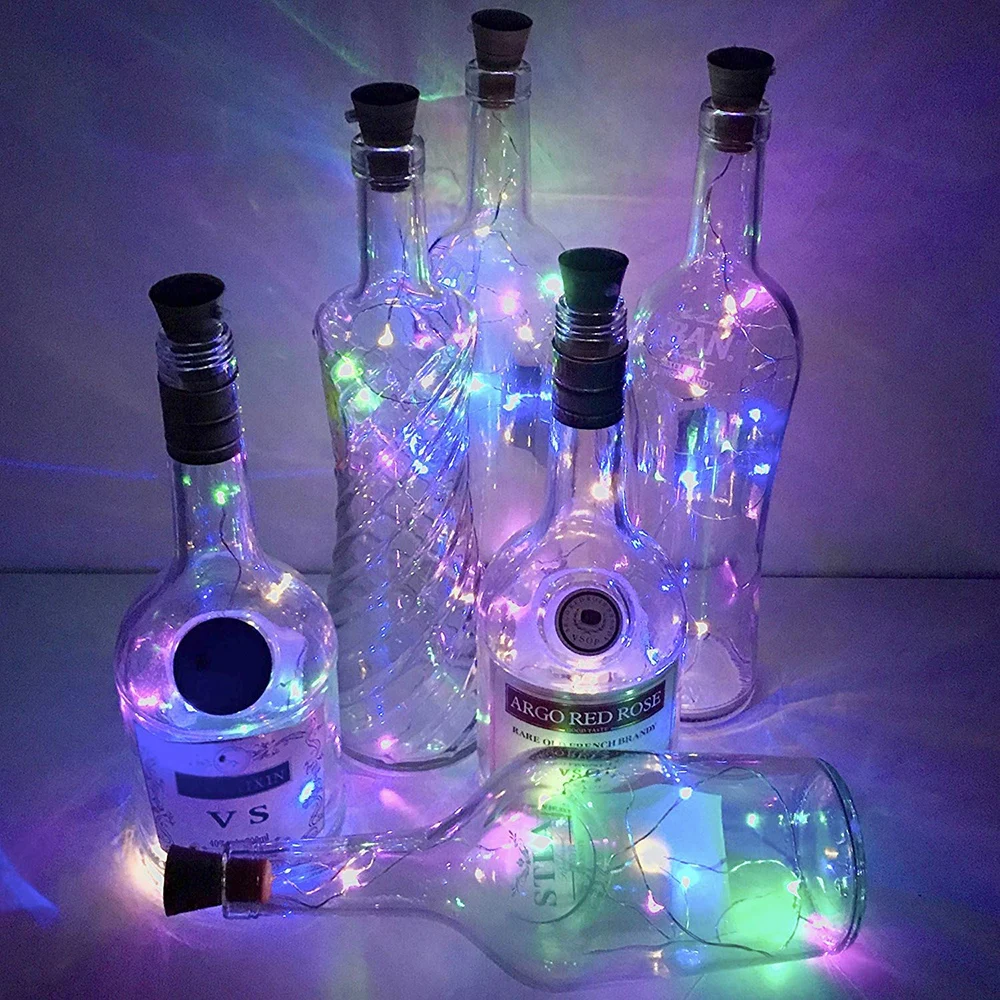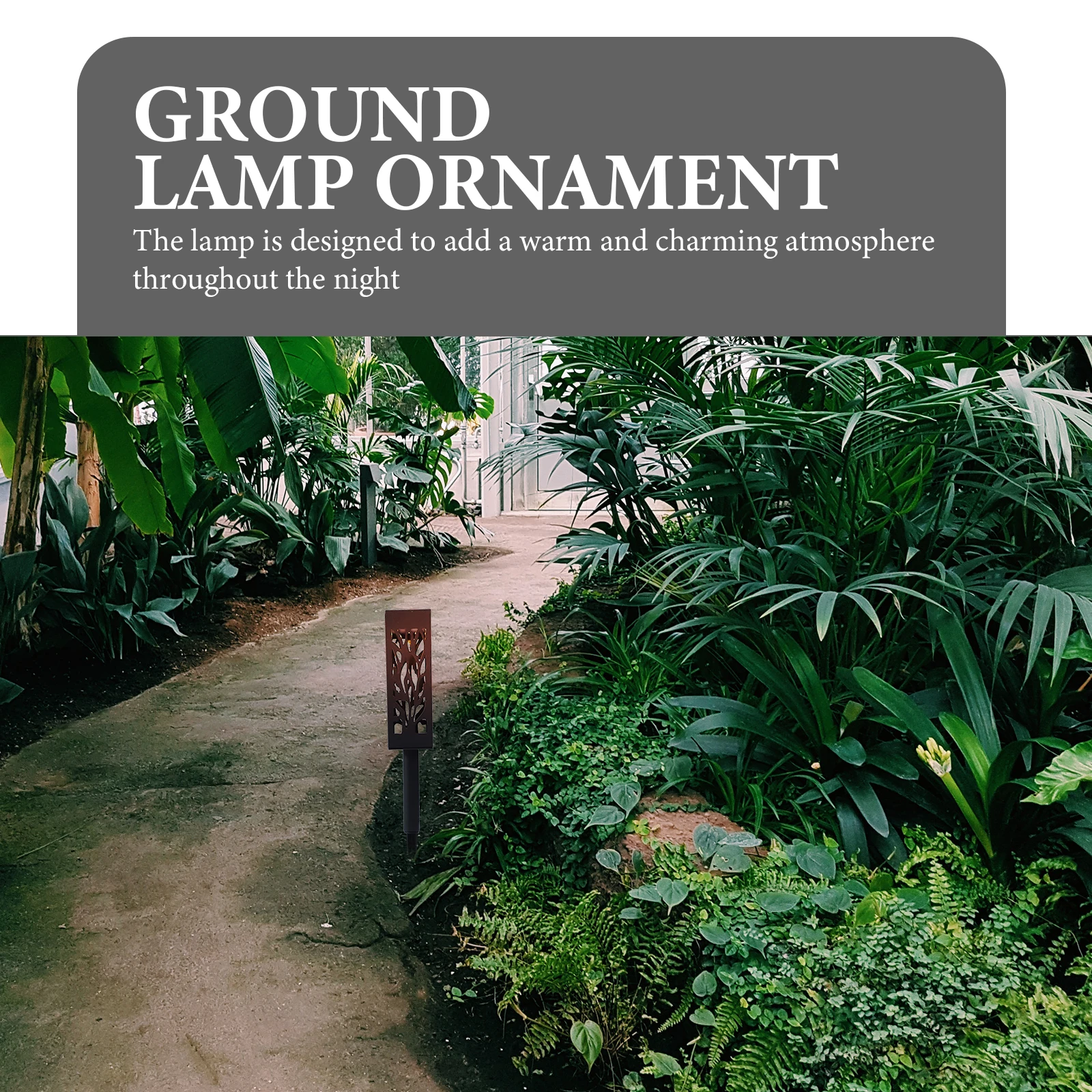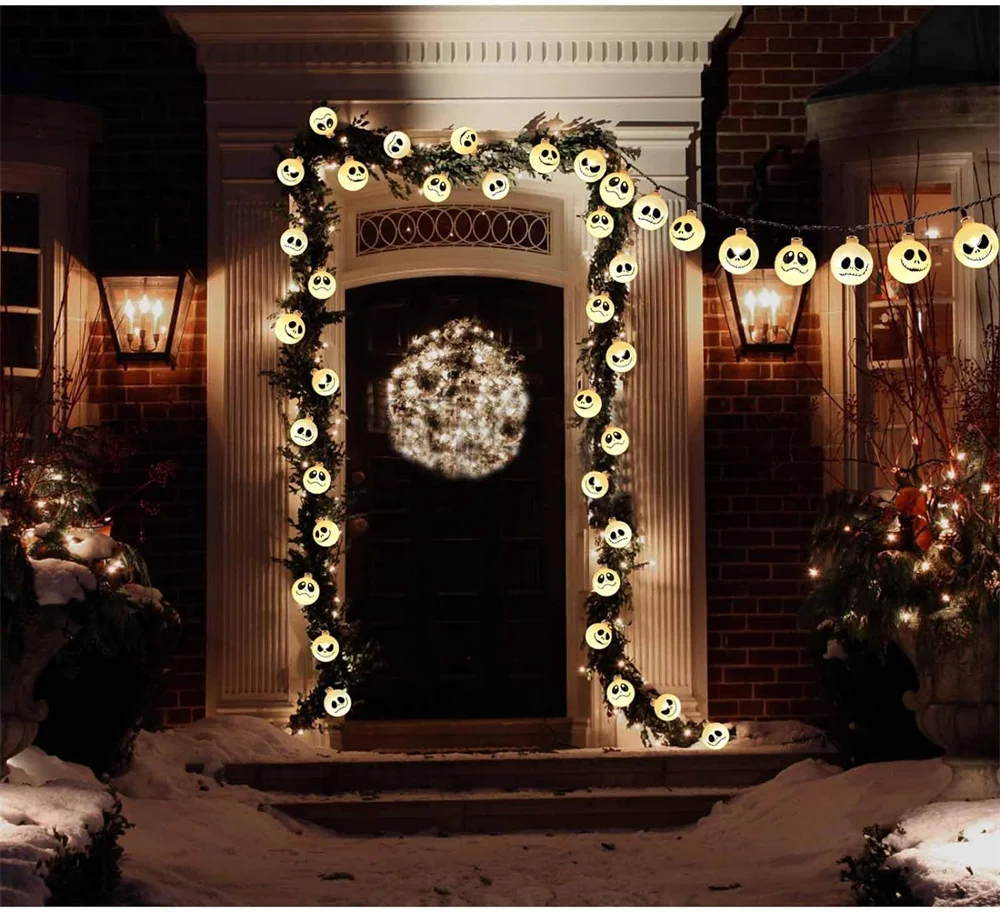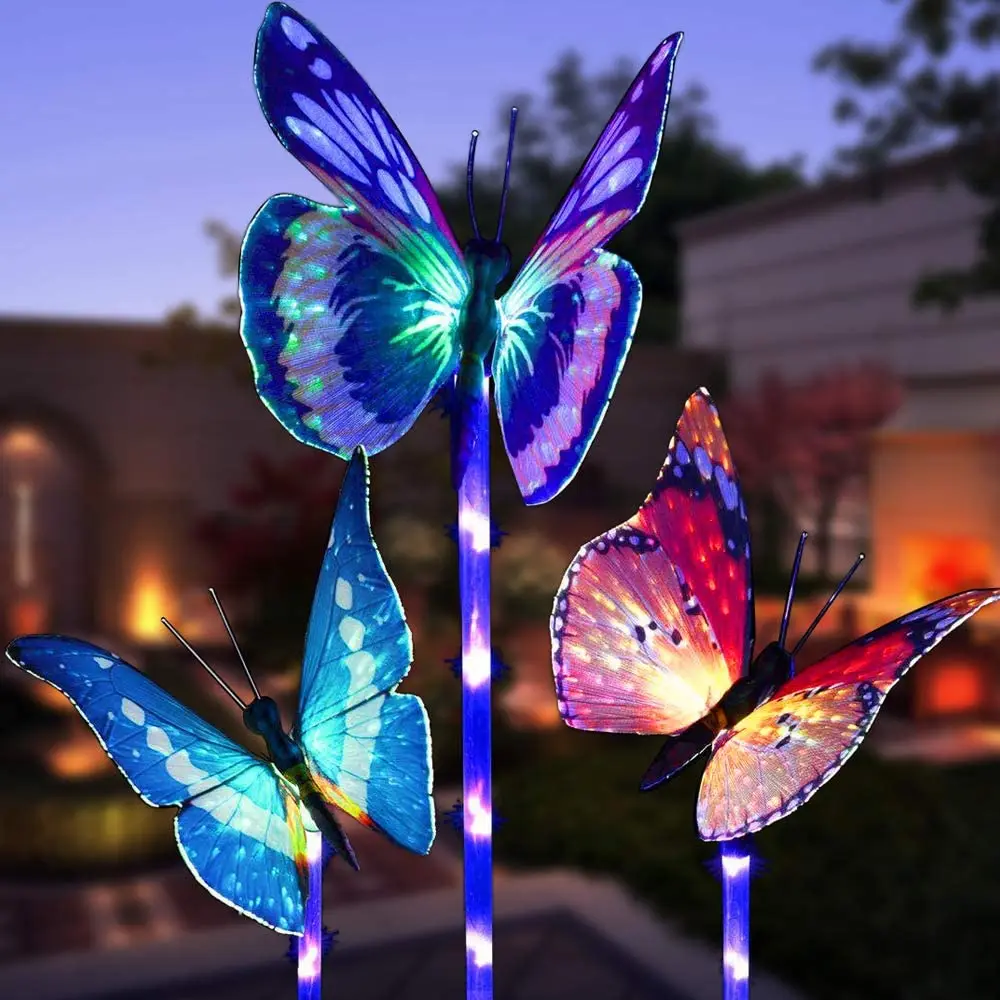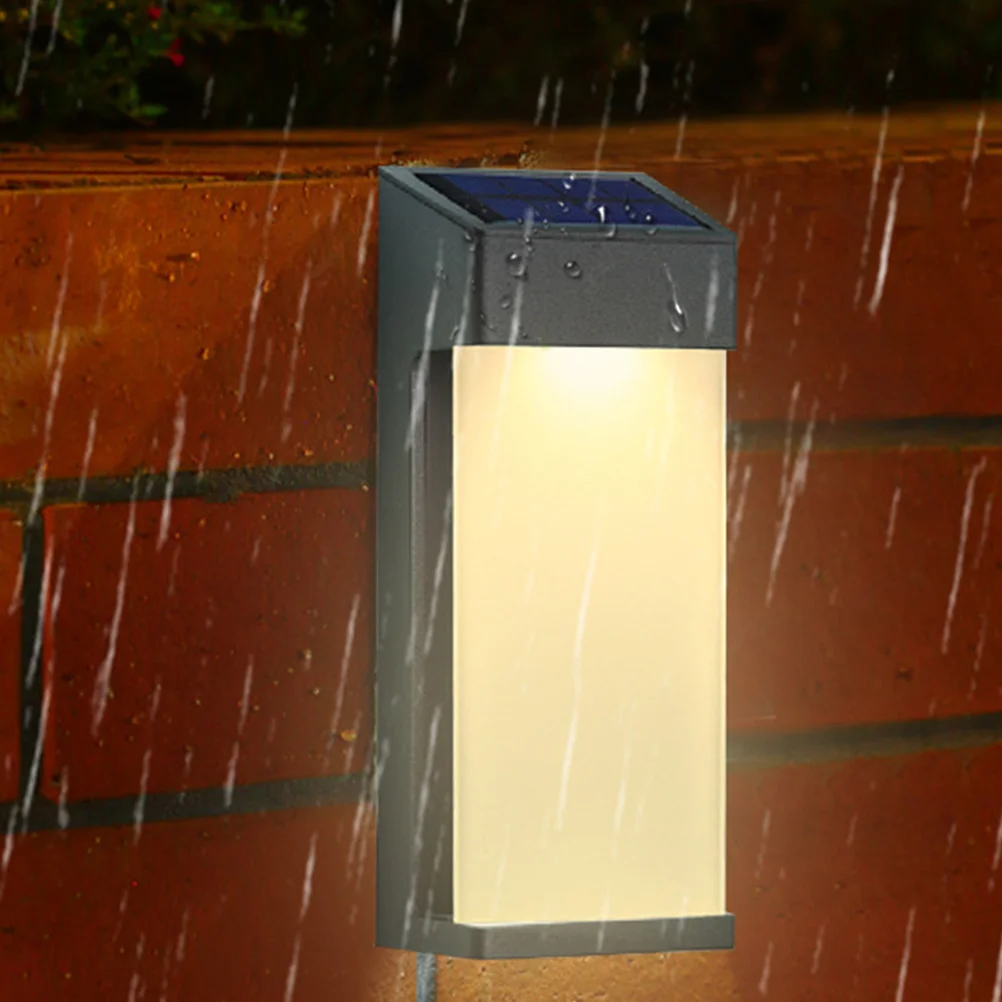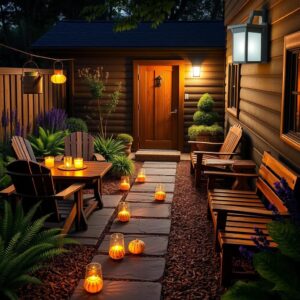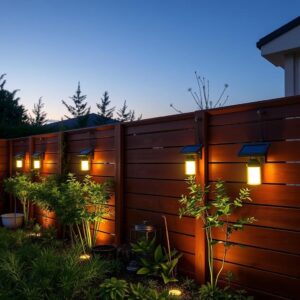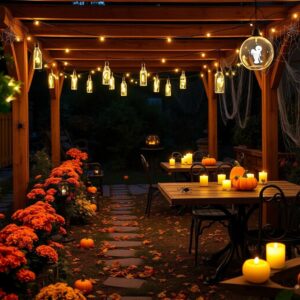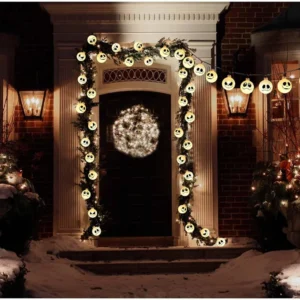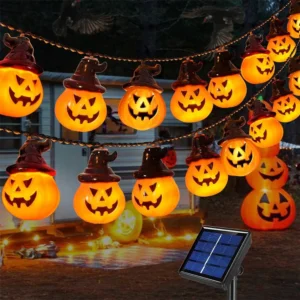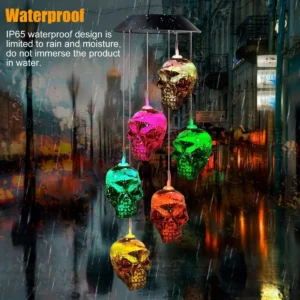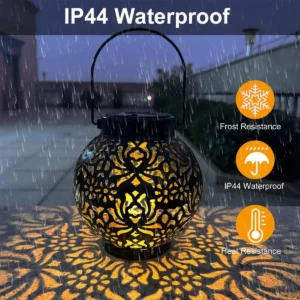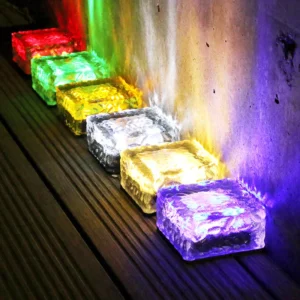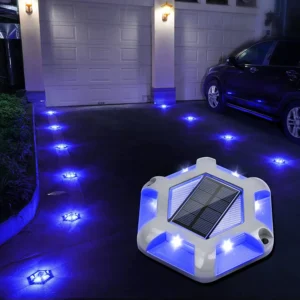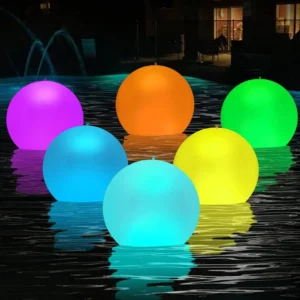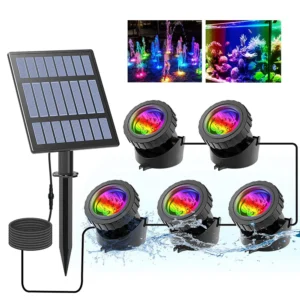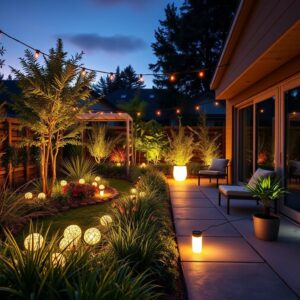Solar Wine Bottle Lights for Outdoor DIY Night Lighting
1. Latest Trends in Lighting Solar Lights for 2025
The world of solar lighting is charging ahead with fresh innovations that blend simplicity with savvy tech, making solar lights smarter and more efficient than ever. One of the standout trends for 2025 is the widespread adoption of automatic on/off sensors. These nifty devices sense the natural shifts of dusk and dawn, flipping your lights on when twilight deepens and off come morning. No fiddling with switches or timers—just effortless ambiance that respects nature’s clock. The perks here are obvious: convenience meets energy savings, making your garden or patio a worry-free glow zone while cutting down on wasted power.
But that’s just the start. Emerging tech like perovskite solar cells are shaking up the scene with their impressive efficiency gains. Unlike traditional silicon panels, these new materials soak up sunlight more effectively, meaning your solar lights get a bigger boost even under less-than-perfect conditions. Plus, the flexibility of these panels opens doors for creative, cost-effective designs. Imagine solar panels that bend and wrap around railings, pots, or irregular surfaces, giving you unprecedented freedom in how and where you light your space.
Together, these advances don’t just raise the bar for performance—they elevate your whole experience. Picture stepping into your garden where solar stakes light a path with richer, steadier brightness, or lanterns powered by the latest tech that shine longer and recharge faster after a cloudy afternoon. It’s about more than light; it’s about weaving sustainable wonder effortlessly into everyday life. The blend of intelligent sensors and cutting-edge panels creates a new standard—one where solar lighting feels less like technology and more like nature’s own magic at work. As these innovations take root in 2025, expect your outdoor spaces to glow smarter, greener, and with an enchanting ease that sparks both comfort and delight.
96 LED Solar Willow Vine Light for Outdoor Decor
2. Creative and Decorative Uses of Solar Lights
Solar lights aren’t just about illuminating dark corners or lighting pathways—they’re a playground for creativity, transforming everyday spaces into enchanting retreats without the fuss of wires or hefty energy bills. One of the simplest ways to infuse ambiance is through solar string lights. These aren’t your typical bulbs strung out in a line; modern solar string lights come shaped like tiny kettles, twinkling stars, or charming stepping stones. Nestle them around flower beds, weave them through trellises, or drape them over railings to create a soft, golden glow that invites warmth and whimsy. Their gentle flicker feels like fireflies caught in a jar, making the garden come alive with magic as dusk settles.
But why stop at outdoors? Indoor spaces can bask in the cozy charm of solar lights as well. Imagine a cluster of delicate solar-powered lanterns perched on a windowsill, casting playful shadows on your living room walls without a trace of cluttered cords. Their energy comes straight from daylight, making them a subtle nod to sustainability that feels effortless. When positioned near indoor plants or atop shelves, these lights bring a hint of twilight tranquility indoors—perfect for quiet evenings or intimate gatherings.
For patios and deck areas, solar lights become more than just functional—they’re part of the décor narrative. Picture solar-powered stake lights lining your stone pathway, guiding guests with a soft, earth-toned radiance. Or solar puck lights nestled beneath benches and planters, highlighting textures and adding depth after sunset. Creative homeowners are even incorporating solar lights into water features, such as fountains or small ponds, where the dancing reflections and shimmering light create an oasis of calm.
Inspiring home setups showcase solar lights arranged to complement natural elements—a rustic pergola wrapped in solar vine lights, or a dining table lit by solar tealights in glass jars, perfect for an alfresco dinner. These ideas demonstrate how solar lighting isn’t just for visibility; it’s about setting a mood, crafting a scene that feels as alive at night as it does in daylight.
Solar lights offer endless possibilities to decorate with ease, style with charm, and light sustainably—giving every corner of your space a touch of glowing brilliance without the complications. So why not let your creativity run wild and see how solar light garden ideas can brighten your world in the most delightful ways?
2 pcs Solar LED Ground Lamp – Easy Install, Durable, Warm Light
3. Commercial Benefits of Solar Outdoor Lights
Solar outdoor lights are no longer just charming accents for backyard patios—they’ve become powerful tools for businesses and public spaces aiming to cut costs, boost reliability, and embrace sustainability effortlessly.
Energy Cost Savings
One of the biggest wins for commercial users is the dramatic reduction in energy expenses. Traditional outdoor lighting racks up hefty electricity bills, especially when left on for long hours. Solar outdoor lights sidestep this cost entirely by soaking up sunshine during the day and shining bright at night without drawing from the grid. Imagine entire parking lots, walkways, or storefronts glowing under the soft kiss of solar light—without a monthly electricity bill to worry about. Businesses can redirect those savings toward other vital investments or simply enjoy a more favorable bottom line.
Maintenance-Free Outdoor Lighting Systems
Another clear advantage lies in their hands-off nature. Solar lights operate independently from the power grid, eliminating many headaches associated with wired lighting systems—no tangled cables, no risk of outages, and no costly electrical repairs. Installation is straightforward, and once set up, these lights thrive with minimal upkeep. Commercial properties appreciate the reliability of solar lighting, especially in remote locations or expansive areas where running electrical lines would be cumbersome or expensive. When maintenance does arise, it’s usually a simple matter of cleaning solar panels or swapping out batteries—a fraction of traditional lighting upkeep.
Applications in Commercial and Public Spaces
The range of commercial and public uses is broad and growing. Retailers upscale curb appeal with twinkling solar-lit pathways, making inviting entrances after dusk. City planners employ solar streetlights and park fixtures that brighten community spaces sustainably, reducing municipal energy costs. Solar lighting also excels in parking garages, walkways, gardens, and outdoor seating areas, where safety and ambiance are both priorities. Even remote job sites benefit from lighting solutions that don’t rely on generators or complex wiring, making solar lights an ideal choice for flexible, eco-conscious commercial operations.
In essence, solar outdoor lighting marries cost-effective, low-maintenance operation with a sleek, green footprint—qualities perfectly suited to the evolving demands of businesses and urban planners looking toward a smarter, more sustainable 2025 and beyond.
Solar Dwarf Statue Light – Outdoor Garden Gnome With Illumination
4. Debunking Common Myths About Solar Lights
Solar lights often get a bad rap because of old misconceptions that stubbornly linger. It’s time to cut through the noise and set the record straight with straightforward facts, especially if you’re considering adding some eco-friendly glow to your outdoor space.
Myth: Solar Lights Don’t Work in Cloudy or Cold Weather
Here’s the deal: solar lights don’t need blazing sun to do their thing. Even on overcast days, the sun’s rays—though diffused—still feed the solar panels enough energy. Think of it like a dimmer yet steady stream rather than a flood. Your solar lights are built to gather that scattered sunlight during the day, store it up, and pour out a gentle, reliable glow come nightfall.
Cold weather? Not a problem either. While battery performance can dip slightly in freezing temps, most modern solar lights use lithium-ion batteries that handle cold snaps with better resilience. So winter evenings can still be lit just as beautifully. So don’t let a gray sky or chilly breeze scare you off; your solar setup will adapt and shine on.
Other Frequent Misconceptions
Some folks worry solar lights won’t last or won’t shine bright enough. Truth is, quality solar lights are crafted tough—built to withstand rain, wind, and regular wear without flickering out. Their brightness has come a long way; many models now produce warm, inviting light strong enough for pathways, decks, or garden nooks without needing to plug into anything.
As for lifespan, solar lights typically run for several years with minimal upkeep. The key is picking reliable products and giving them some basic care—like wiping the panels clean now and then to keep that sun-catcher sparkling.
Understanding Solar Efficiency and Environmental Factors
Solar lights aren’t magic, but they’re pretty clever. Their performance hinges on a balance of solar panel efficiency, battery health, and how much sunlight they soak up during the day. Positioning matters: panels need direct or mostly unobstructed sunlight to charge optimally.
So, before blaming your solar gear for dim evenings, check if trees, walls, or leaves are shading the panels. Adjust their placement if needed. With a little attention, solar lights can outshine outdated assumptions and brighten your nights sustainably and effortlessly.
In short, the myths about solar lighting are mostly just old shadows—easy to dispel with a little sunlight and some honest facts. Embrace solar, and watch your garden glow live on, rain or shine.
Solar String Lights – Nightmare Before Christmas Halloween Decor
5. Key Technical Innovations Enhancing Solar Lighting
Solar lighting is stepping into 2025 with some serious upgrades that blend rugged practicality with smarter, sleeker technology—no frills, just solid performance. If you thought solar lights were simple garden decorations, it’s time to rethink. Behind their soft glows are key innovations pushing them into new territory.
First up, perovskite solar cells. These little powerhouses are rewriting what solar panels can do. Unlike traditional silicon cells, perovskites are more efficient at capturing sunlight, meaning they generate more energy from less space. That efficiency translates to brighter lights lasting longer through the night. Their potential to be produced cheaply and flexibly means you’ll see them popping up in more solar lights, making your garden shine better without hiking your energy footprint.
Then there are flexible solar panels—yes, panels you can bend, curve, or fit into spots where rigid ones won’t dare. Picture strips tucked along a winding railing or a curved pergola. This adaptability not only opens fresh design routes but also cuts down installation headaches. They’re lighter and often less costly, making solar lights more accessible and easier to place exactly where you want that magical glow.
Lastly, the rise of smart features in 2025 models is turning solar lighting into an easy, responsive companion for your outdoor spaces. Think automatic on/off sensors that react to changing daylight or even smartphone apps that let you adjust brightness and colors with a few taps. It’s about convenience and control wrapped in a robust, weatherproof design that works all year round without you lifting a finger.
These innovations aren’t about flash—they’re about sturdy, smarter, and more eco-friendly lighting. So whether it’s illuminating a quiet path or spotlighting a favorite nook, today’s solar lights are ready to perform, adapt, and brighten your nights with an effortless touch of modern tech.
3 PCs Set | Butterfly Solar Lights Stake for Garden Pathway Decorative LED
6. Practical DIY Installation Tips for Solar Lights
When it comes to installing solar lights, the magic really begins with where and how you place them. Choosing the right spot is half the battle won—after all, these lights rely on soaking up sunshine by day to glow warmly by night. Aim for locations that bask in direct sunlight for most of the day, steering clear of shady corners where trees, walls, or neighboring structures block the rays. Think of your solar panels as thirsty sun-catchers thirsty for that golden daylight.
Before mounting anything, take a moment to clear away leaves, dirt, or debris from the surface where you’ll place the panel. Even a thin film of dust can dull the glow. If your setup requires positioning the solar panel away from the light fixture, don’t fret. Extension cables come to the rescue, letting you place panels in sun-splashed spots while lighting up shaded or harder-to-reach areas. Just be sure any cable connections are snug and weatherproof to keep things humming smoothly.
Stability is key. Secure mounting ensures your solar lights stand strong through gusty winds and rainy nights, casting steady pools of light that won’t sway or dim unexpectedly. Use sturdy brackets, stakes, or hooks, depending on the fixture style and surface—whether it’s a post, wall, or garden bed. If you’re drilling or hammering, keep your tools handy and follow safety basics. A well-anchored light feels like a trusted sentry guarding your garden.
Now, if you’re a hands-on kind of person excited about a step-by-step approach, here’s a simple rundown: Start by selecting those sunny spots; clear the area; attach or stake down your lights securely; connect any extension cables if needed; and finally, let your garden bask in the sun’s energy until twilight. Once darkness settles, watch as your solar lights flicker to life, turning ordinary spaces into inviting, illuminated retreats.
With just a little effort and some savvy placement, you can transform your yard, patio, or pathways into magical, eco-friendly escapes that need nothing but sunlight to shine. No wiring, no electricity bills—just pure, simple solar brilliance lighting your nights with ease.
Waterproof Solar LED Garden Light for Outdoor Spaces
7. Addressing Solar Light Challenges and Effective Solutions
Solar lights promise an effortless garden glow powered by the sun, but like any tech, they come with their quirks. If your solar garden isn’t quite shining like a moonlit fairytale, the root cause often comes down to a few straightforward challenges. Let’s cut through the noise and tackle these common issues head-on.
One frequent culprit is insufficient sunlight exposure. Imagine trying to charge your phone in a dark room—it just won’t happen. Your solar lights need their daily sun quota, ideally six to eight hours of direct sunlight, to store enough energy for a vibrant night display. If trees, awnings, or buildings cast shadows on your panels for much of the day, your lights will sputter or dim. The fix? Scout for a sunnier spot and reposition your panels accordingly. Sometimes all it takes is a few steps to the south or a higher perch on a fence.
Lower brightness can also stem from underpowered or aging batteries. These little power packs don’t live forever; over time, their capacity to hold a charge wanes. Swapping out batteries annually keeps your setup humming strong. Opt for good-quality rechargeable batteries to maximize performance without adding to waste.
Improper orientation of the solar panels often sneaks under the radar. Panels need to face the sun directly to slurp up rays efficiently. If yours are tilted sideways or buried under leaves, they’re begging for a better angle. Tilting panels to match your local sun path makes a world of difference, giving you brighter evenings hassle-free.
For maintenance, a few simple habits go a long way. Regularly wipe dust, leaves, and dirt from solar panels—they’re like tiny windows to the sun, and even a thin film dulls their power. Clear debris from around lights to avoid shadows, and check mounts and connections now and then to keep everything snug against the elements.
The payoff for this care is more than pretty evenings—it’s a smaller carbon footprint and a leaner electricity bill. With solar lights, many households save around $225 annually by cutting traditional lighting costs while basking in clean, renewable energy. So, when your solar lights stumble, don’t get discouraged. A little troubleshooting brings back their steady glow, ensuring your outdoors remains a sustainable, luminous sanctuary night after night.


